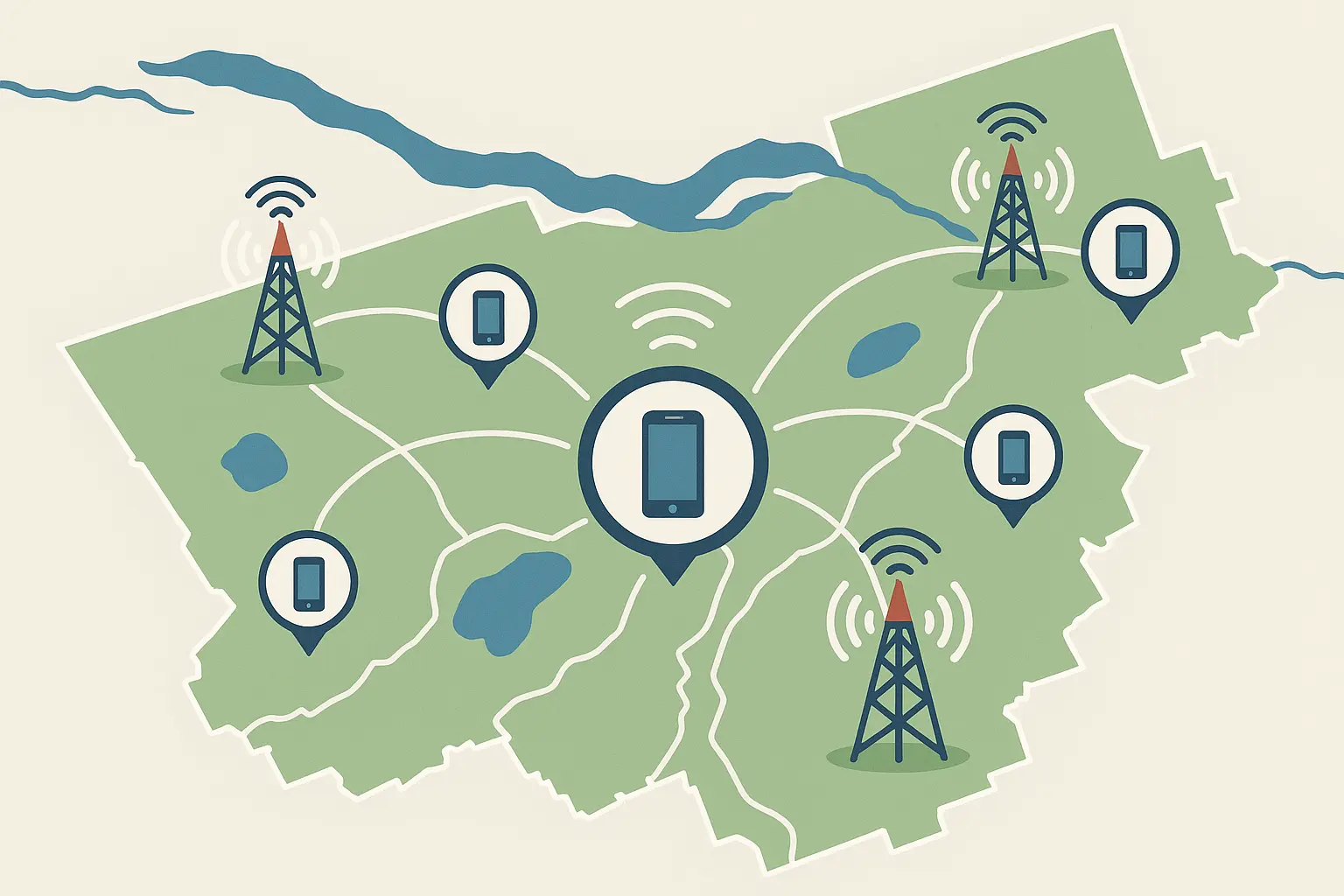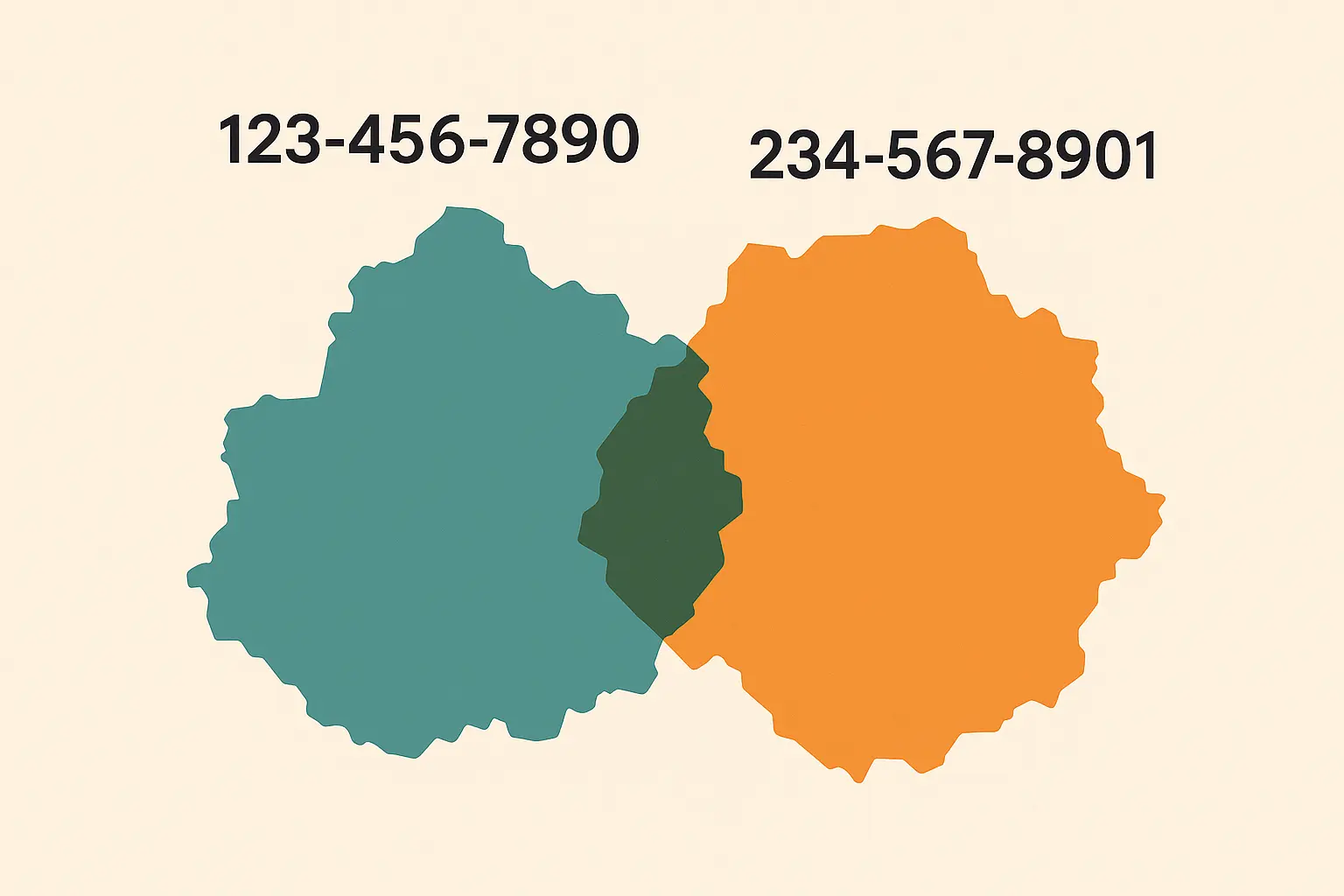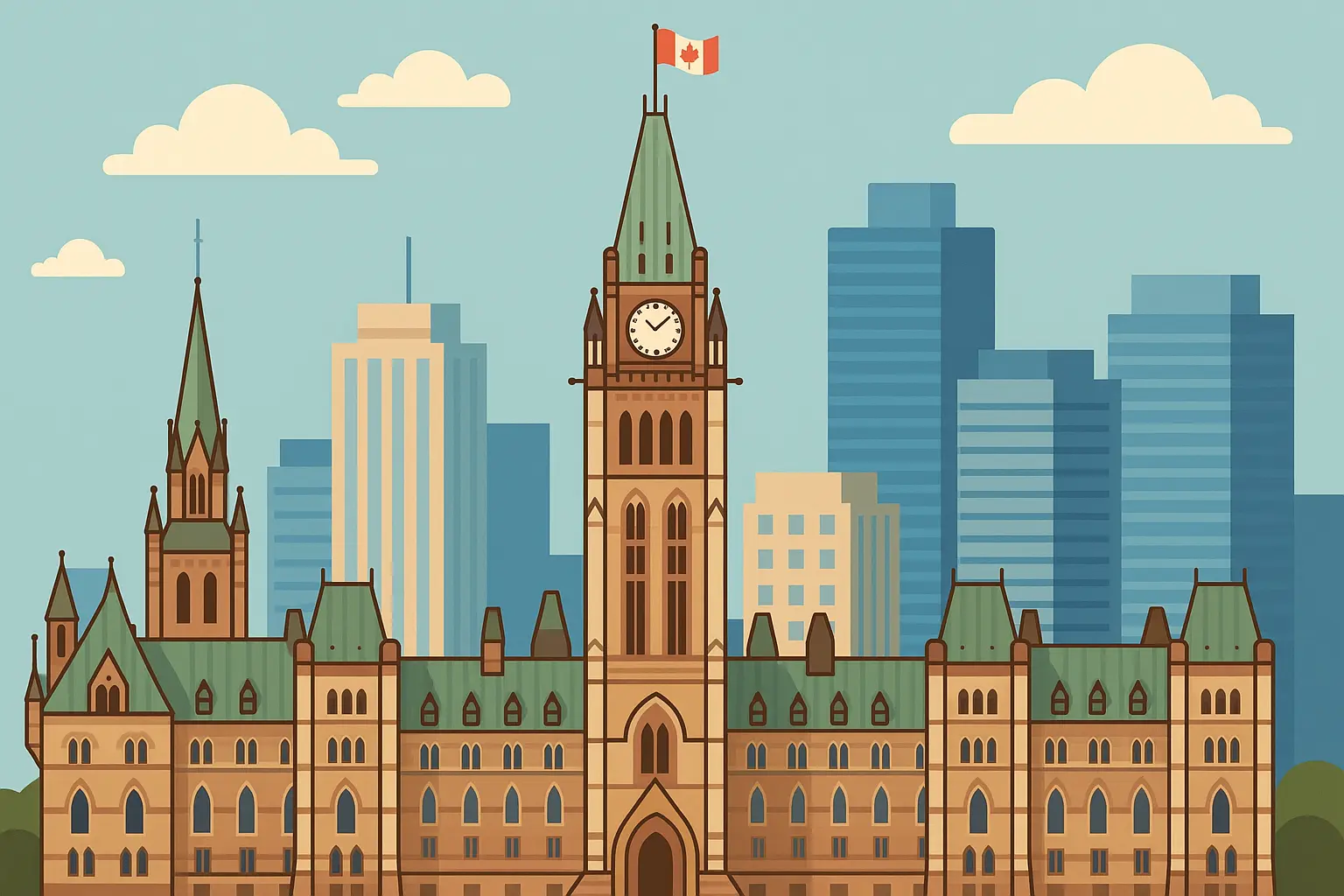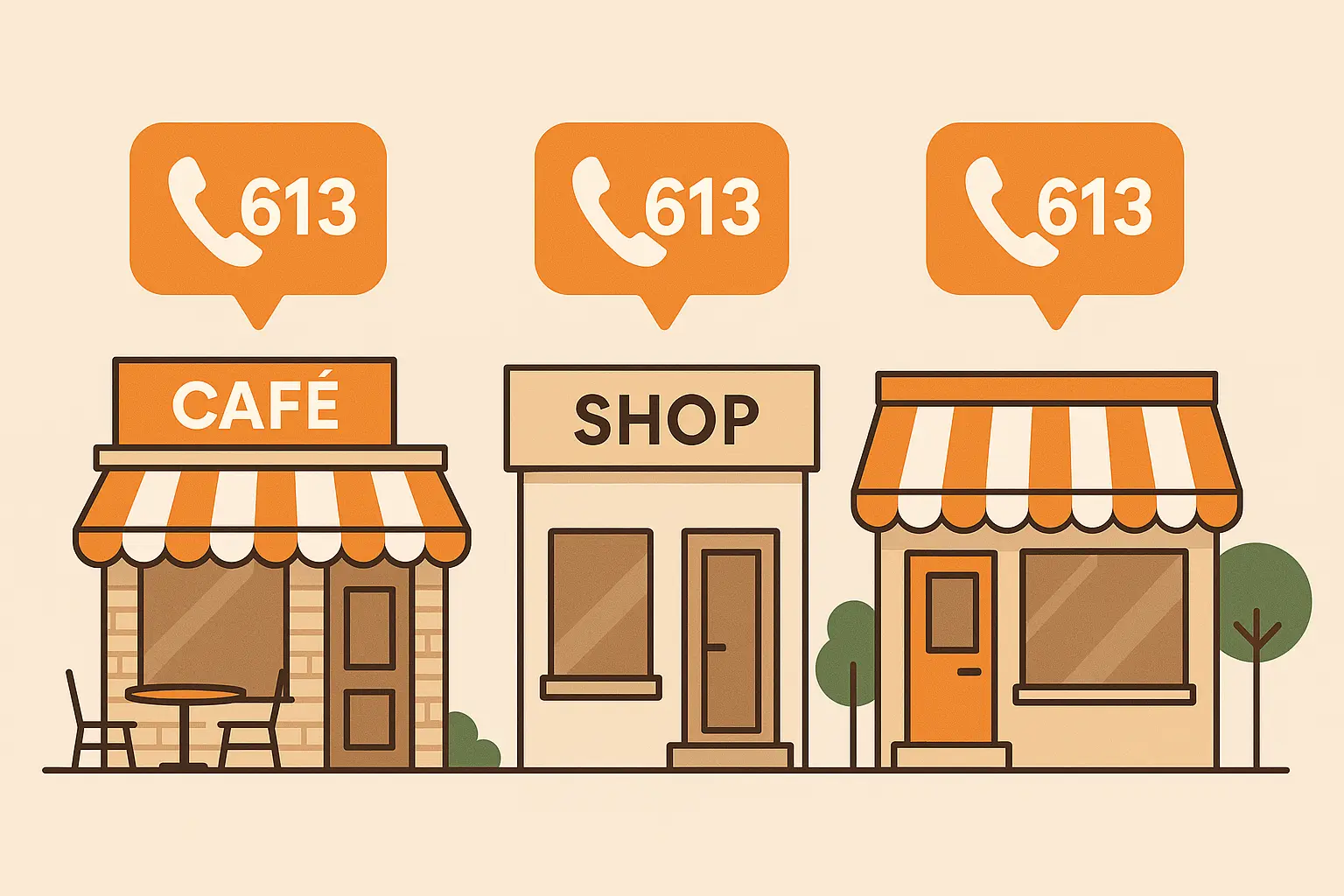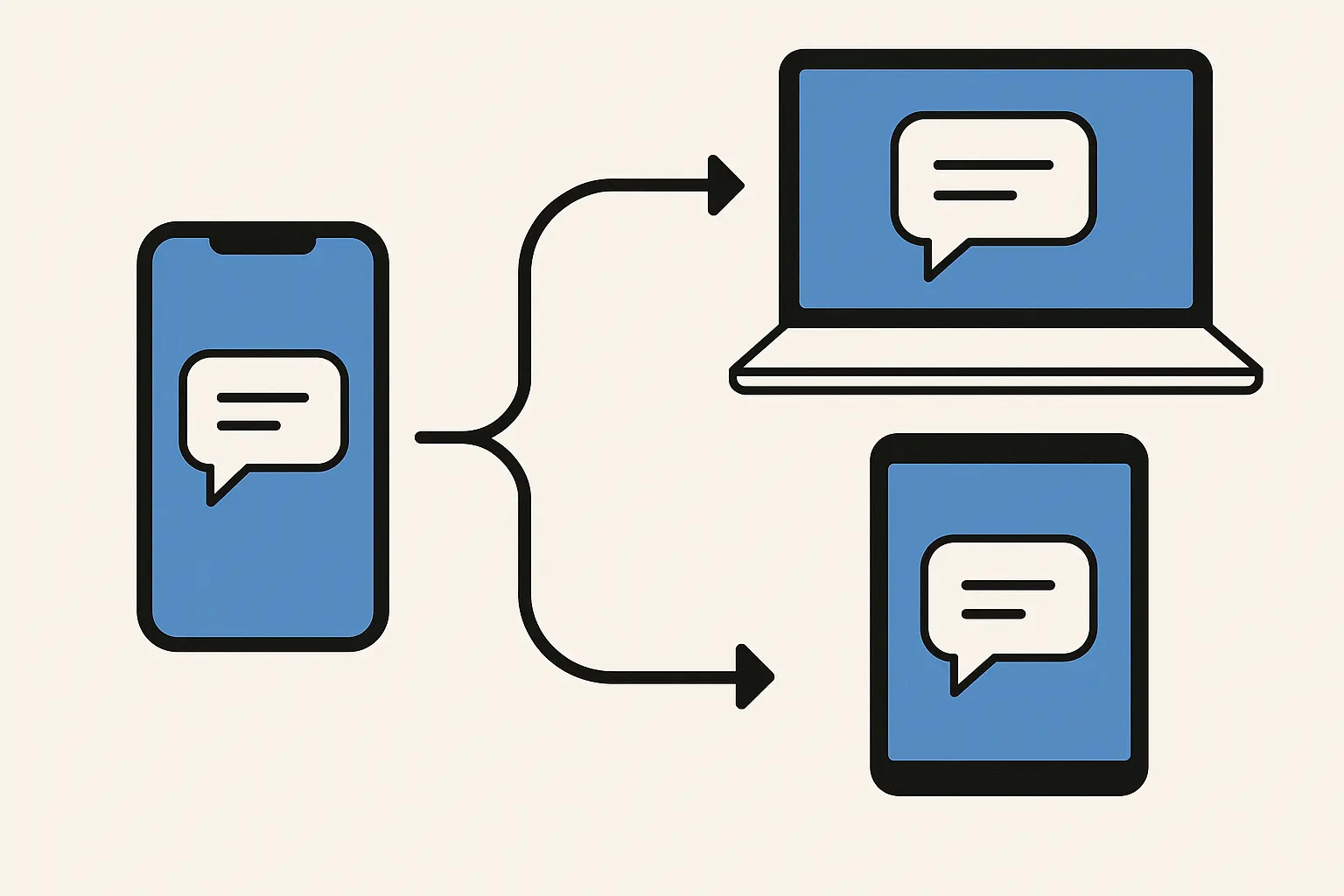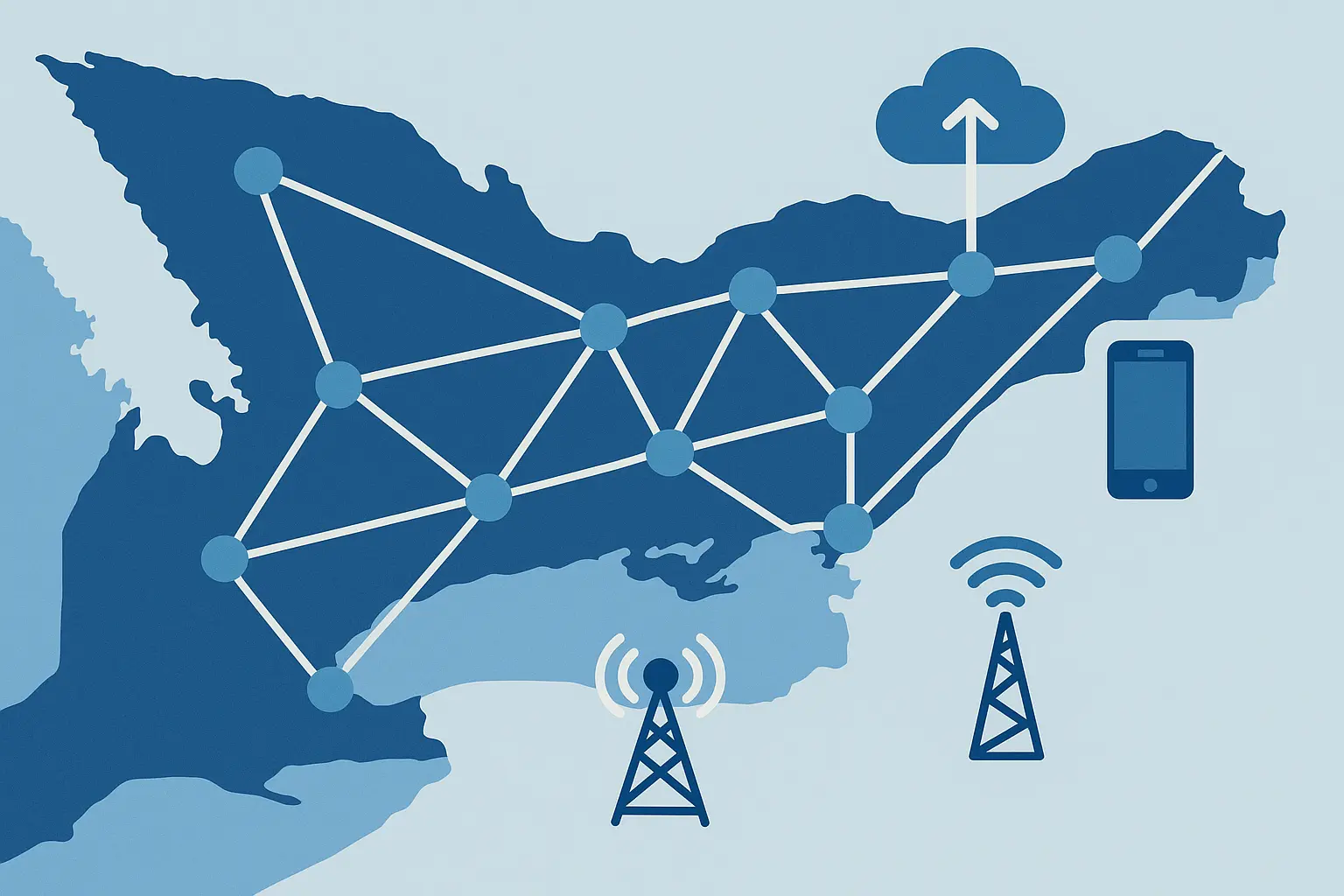When I first moved to Ottawa, I thought getting a 613 number was just about having a local phone number. Boy, was I wrong. After three years of living and working here, I’ve learned that this area code carries way more weight than I ever imagined – and not just because it’s Canada’s capital calling.
Let me share what I’ve discovered that could save you some headaches (and maybe even help your business). The 613 area code was established in 1947 as one of Canada’s original area codes, giving it nearly eight decades of telecommunications history. Whether you’re a business owner, government employee, or just someone trying to stay connected in eastern Ontario, these insights will help you navigate the complexities of 613 communications more effectively.
Table of Contents
Table of Contents
-
It’s Not Just Ottawa (And That Matters More Than You Think)
-
The 343 Thing Everyone Gets Wrong
-
Why Government Workers Hoard 613 Numbers
-
The Real Communication Headaches (And What Actually Works)
-
Making Modern Communication Actually Work
-
Final Thoughts
TL;DR
-
The 613 area code covers way more than just Ottawa – it stretches across all of eastern Ontario including rural communities and major cities like Kingston and Cornwall
-
Area code 343 works as an overlay with 613, meaning both codes serve the exact same geographic area since 2010
-
Everything in the 613 region operates on Eastern Time, making business coordination with Toronto and New York seamless
-
The CRTC heavily regulates number allocation to prevent abuse and ensure fair access across telecommunications providers
-
Federal government departments rely heavily on 613 numbers, giving them special recognition value for official communications
-
Modern SMS forwarding solutions can solve the biggest communication management challenges for 613 users across multiple devices and platforms
It’s Not Just Ottawa (And That Matters More Than You Think)
Here’s the first thing that surprised me: 613 isn’t just Ottawa’s area code. It covers a huge chunk of eastern Ontario – we’re talking Kingston, Cornwall, Brockville, and dozens of smaller towns I’d never heard of.
Why does this matter? Well, if you’re running a business, your 613 number immediately tells people you’re local to this entire region. That’s gold for building trust, especially in smaller communities where everyone knows everyone.
The Real 613 Territory
The 613 area code location’s primary territory centers around Ottawa but extends much further than most people realize. I found that it includes major suburban areas like Kanata, Nepean, and Gloucester, while also reaching rural eastern Ontario communities including Cornwall, Brockville, and Kingston.
|
Major 613 Cities |
Population |
Key Industries |
|---|---|---|
|
Ottawa |
1,017,449 |
Government, Technology, Defense |
|
Kingston |
132,485 |
Education, Healthcare, Tourism |
|
Cornwall |
47,845 |
Manufacturing, Agriculture |
|
Brockville |
21,854 |
Manufacturing, Tourism |
|
Belleville |
55,071 |
Manufacturing, Agriculture |
Ottawa: The Heart of Everything
Ottawa proper forms the heart of 613 territory, encompassing the downtown core, government districts, and immediate suburban communities. The code 613 serves Canada’s capital city with all its federal institutions, diplomatic missions, and the bustling tech sector that’s earned Ottawa the nickname “Silicon Valley North.”
Recent sports news highlights the local connection to the 613 area code, with NHL insider reports suggesting the Ottawa Senators are interested in trading for Mason McTavish, particularly noting that “One interesting name that has been bandied about in the 613 area code is that of local forward Mason McTavish.” This demonstrates how the area code has become synonymous with Ottawa’s identity beyond just telecommunications.
The Quebec Border Quirk
Here’s something that confused me for months: cross the river from Ottawa to Gatineau, and suddenly you’re in different area code territory. I work with people on both sides, and I constantly have to explain why my number is 613 when I’m calling from “the same city.”
It’s not the same city, technically – but try explaining that to confused clients. The proximity to the US border also means some 613 users regularly communicate with American area codes, particularly in northern New York state.
Rural Eastern Ontario’s Hidden Reach
Beyond Ottawa’s urban sprawl, 613 serves dozens of smaller communities scattered across eastern Ontario’s countryside. Places like Cornwall near the US border, historic Kingston with its limestone architecture, and Brockville along the St. Lawrence River all share this area code.
A farming equipment dealer in Cornwall might need to coordinate with suppliers in Ottawa, customers in rural townships, and service technicians across the region – all using 613 numbers but spanning vastly different geographic and business contexts.
The 343 Thing Everyone Gets Wrong
In 2010, they added area code 343 to the same region. Not because they split the area – because they ran out of 613 numbers. Both codes cover the exact same territory.
What this means practically: Your neighbor might have 343, you might have 613, and there’s zero difference in service. New numbers get assigned from whichever pool has availability.
The telecommunications landscape continues evolving, with Ottawa getting new area code in March as the Ottawa Citizen reported that “A new local area code will start appearing within eastern Ontario on March 22” as area code 753 was approved by the Canadian Radio-television and Telecommunications Commission.
How the Overlay Actually Works
The overlay system means that when you’re getting a new phone line in eastern Ontario, you might receive either a 613 or 343 number depending on what’s available from your service provider. Both codes work identically and serve the same geographic area – there’s no difference in service quality or coverage.
|
Area Code |
Implementation Year |
Status |
Geographic Coverage |
|---|---|---|---|
|
613 |
1947 |
Original |
All of Eastern Ontario |
|
343 |
2010 |
Overlay |
Same as 613 |
|
753 |
2024 |
New Overlay |
Same as 613/343 |
Pro tip: If you’re starting a business, ask specifically for a 613 number. People still see it as more “established” than 343, even though that’s completely illogical.
Time Zone Simplicity
One thing that makes 613 communications straightforward is the consistent time zone coverage across the entire region. Everything operates on Eastern Standard Time (EST) and Eastern Daylight Time (EDT), which aligns perfectly with major business centers like Toronto and New York.
This is actually a big deal for business. Try coordinating meetings across area codes that span multiple time zones – it’s a nightmare. With 613, you set a meeting time and everyone knows what you mean.
Why Government Workers Hoard 613 Numbers
Working in Ottawa, you quickly realize that 613 numbers are like a badge of legitimacy for anything government-related. Federal departments, embassies, Crown corporations – they all want 613.
There’s actually psychology behind this. When Canadians see a 613 number calling, there’s an automatic assumption it might be important government business. Smart scammers know this too, so always verify who’s actually calling.
Federal Government’s Communication Hub
As Canada’s capital area code, 613 numbers have become the unofficial standard for federal government communications. When you see a 613 phone number on official correspondence or business cards, there’s an immediate association with legitimate government operations.
Spotting Legitimate vs. Scam Calls
Real government calls from 613 numbers:
-
Give you specific department names and employee IDs
-
Never demand immediate payment over the phone
-
Provide callback numbers you can verify online
-
Use proper government terminology
-
Give you time to verify information
Red flags for fake government calls:
-
Demanding immediate payment over the phone
-
Asking for SIN numbers or banking info
-
Threatening arrest for unpaid taxes
-
Poor grammar or non-professional language
Local Business Credibility
Smart businesses in eastern Ontario understand that a 613 number signals local presence and commitment to the regional market. Local businesses figured out years ago that 613 numbers signal “established local presence.” It’s not rational, but it works. People trust businesses with 613 numbers more than those with 343, even though there’s literally no difference.
A home renovation company in Kingston prominently displays their 613 number on trucks, business cards, and advertisements to signal they’re locally established and understand regional building codes, weather challenges, and supplier networks that out-of-area contractors might not know.
The Real Communication Headaches (And What Actually Works)
Here’s where I get practical about the daily frustrations of modern communication in the 613 region.
The Multi-Device Problem
You’re at your desk working when an important text comes in. But it’s on your phone, which is charging in another room. By the time you see it, you’ve missed responding to a client inquiry or an urgent family message.
This happens to me constantly, and it’s worse when you’re dealing with government communications that might actually be time-sensitive. Unlike email, which syncs across all your devices, SMS messages typically stay trapped on the device where they arrive.
For Android users in the 613 region dealing with these challenges, learning how to forward text messages on Android devices can provide the multi-device access needed for professional communications.
Business Integration Challenges
Companies in the 613 region often struggle to integrate SMS communications with their existing business systems like email platforms, CRM software, and team collaboration tools. Important customer messages might arrive via SMS but need to be logged in business systems or shared with team members who don’t have access to the original phone.
Checklist for SMS Integration Planning:
-
Identify all devices needing message access
-
Map current communication workflows
-
Determine which messages need business system integration
-
Establish backup access methods
-
Set up filtering rules for different message types
Making Modern Communication Actually Work
After trying various solutions, here’s what works: automatic SMS forwarding to email. Sounds simple, but it’s been a game-changer.
Auto Forward SMS addresses these critical communication management challenges by providing reliable, automated message forwarding that bridges the gap between mobile SMS and email or web platforms. For 613 number users dealing with important government communications, business messages, or personal coordination across eastern Ontario’s diverse geography, this type of solution ensures no critical messages get missed regardless of device availability.
Email Integration That Actually Works
The most effective approach involves setting up automated systems that can forward text messages to email addresses seamlessly, ensuring 613 communications remain accessible across all devices and platforms.
By automatically forwarding SMS messages to email addresses, you can access important 613 communications from any device with email capability. Now I see everything on my computer, tablet, whatever device I’m using. No more missed messages, no more scrambling for my phone during meetings.
This is especially useful for:
-
Business owners juggling customer texts
-
Government workers who can’t miss official communications
-
Anyone managing communications across Ottawa’s sprawling geography
-
People who work remotely but need to stay responsive
Business System Integration
For businesses requiring more sophisticated integration, solutions that can forward text messages to API endpoints enable direct integration with existing business systems and workflows.
Advanced forwarding capabilities allow 613 businesses to route SMS messages directly into their existing workflows through URL and API forwarding. Customer service messages can automatically populate CRM systems, appointment confirmations can integrate with scheduling software, and team communications can flow into collaboration platforms.
Smart Filtering That Makes Sense
The magic is in the filtering. I’ve got mine set up so:
-
Government numbers go straight to my work email (marked urgent)
-
Customer inquiries route to my business system
-
Family texts go to my personal email
-
Everything else hits a general folder I check regularly
Team-based businesses can also benefit from solutions that forward text messages to Slack channels, enabling collaborative response to customer inquiries and business communications across the 613 region.
This way I’m not drowning in notifications, but I never miss what matters. Keyword-based filtering can identify urgent communications that need immediate attention while routing routine messages through standard channels.
The Technical Stuff You Actually Need to Know
Look, I’m not going to bore you with every detail of how phone numbers get assigned, but there are a few technical things that actually matter in real life.
The Canadian Radio-television and Telecommunications Commission (CRTC) runs the whole show. They make sure Bell, Rogers, Telus, and the smaller players all get fair access to number blocks. When you sign up for service, your provider assigns you a number from their allocated pool.
Understanding proper formatting becomes crucial when dealing with international communications from the 613 region, especially for businesses that need to enter phone numbers in international format for global coordination with suppliers and partners.
Here’s what’s cool: if you want to switch carriers, you can keep your 613 number. The CRTC guarantees this right, which is huge if you’ve built business relationships around that number.
Rural vs. Urban Communication Realities
The 613 region spans everything from downtown Ottawa’s tech corridors to rural farming communities. This creates interesting communication challenges.
A contractor in rural eastern Ontario might need to coordinate with:
-
Suppliers in Ottawa (urban, fast internet, multiple communication channels)
-
Clients in small towns (maybe limited cell service, prefer phone calls)
-
Subcontractors across the region (mix of tech-savvy and traditional communicators)
Having reliable SMS forwarding becomes crucial when you’re dealing with this kind of geographic and demographic diversity.
The telecommunications infrastructure supporting these solutions spans an impressive network, with NumberBarn reporting they maintain “46,769,504 phone numbers” in their marketplace, demonstrating the massive scale of modern phone number management systems that support advanced forwarding and integration capabilities.
Final Thoughts
The 613 area code has evolved from a simple geographic identifier into something that carries real weight in Canadian business and government. Understanding how to leverage that recognition while solving the practical communication challenges of modern life – that’s where the real value lies.
The 613 area code’s historical significance becomes clear when you consider it “serves southeastern Ontario, including Ottawa, Canada’s capital city, and surrounding towns such as Kingston, Cornwall, and Brockville. Originally created in 1947, it is one of Canada’s oldest area codes.” The cultural and political importance of the region is highlighted by landmarks such as “Ottawa’s Parliament Hill, since 1867, is a 613 historic site,” emphasizing how deeply the area code is connected to Canadian governance and identity.
Whether you’re new to the region like I was, or you’ve been here forever but are frustrated with managing communications across multiple devices, there are solutions that actually work. You just have to know where to look.
The communication landscape keeps evolving. We’re getting more area codes (753 is just the beginning), communication platforms keep multiplying, and the expectation for instant response keeps growing. The solution isn’t to chase every new technology – it’s to build communication systems that work reliably regardless of which device you’re using or where you are in the sprawling 613 region.
For me, that means automated SMS forwarding, smart filtering, and integration with the tools I already use for business. Your setup might be different, but the principle is the same: make technology work for you, not against you.
The most important thing I’ve learned: Don’t let important 613 communications get trapped on one device when you could have seamless access everywhere. It’s 2024 – your phone system should work as hard as you do.
Whether you’re dealing with important government correspondence, running a business across the region’s diverse geography, or simply trying to stay connected with family and colleagues, the key is having systems that work reliably across all your devices and platforms. The communication landscape continues evolving, but the fundamental need for accessible, integrated messaging remains constant.
In a region where government timing matters and business relationships span from urban Ottawa to rural communities, missing messages isn’t an option. Don’t allow important messages to get trapped on a single device when you could have seamless access across all your platforms.
If you’re struggling with SMS management across multiple devices or need better integration between your 613 communications and business systems, Auto Forward SMS offers the automated forwarding solutions that can bridge these gaps effectively.

